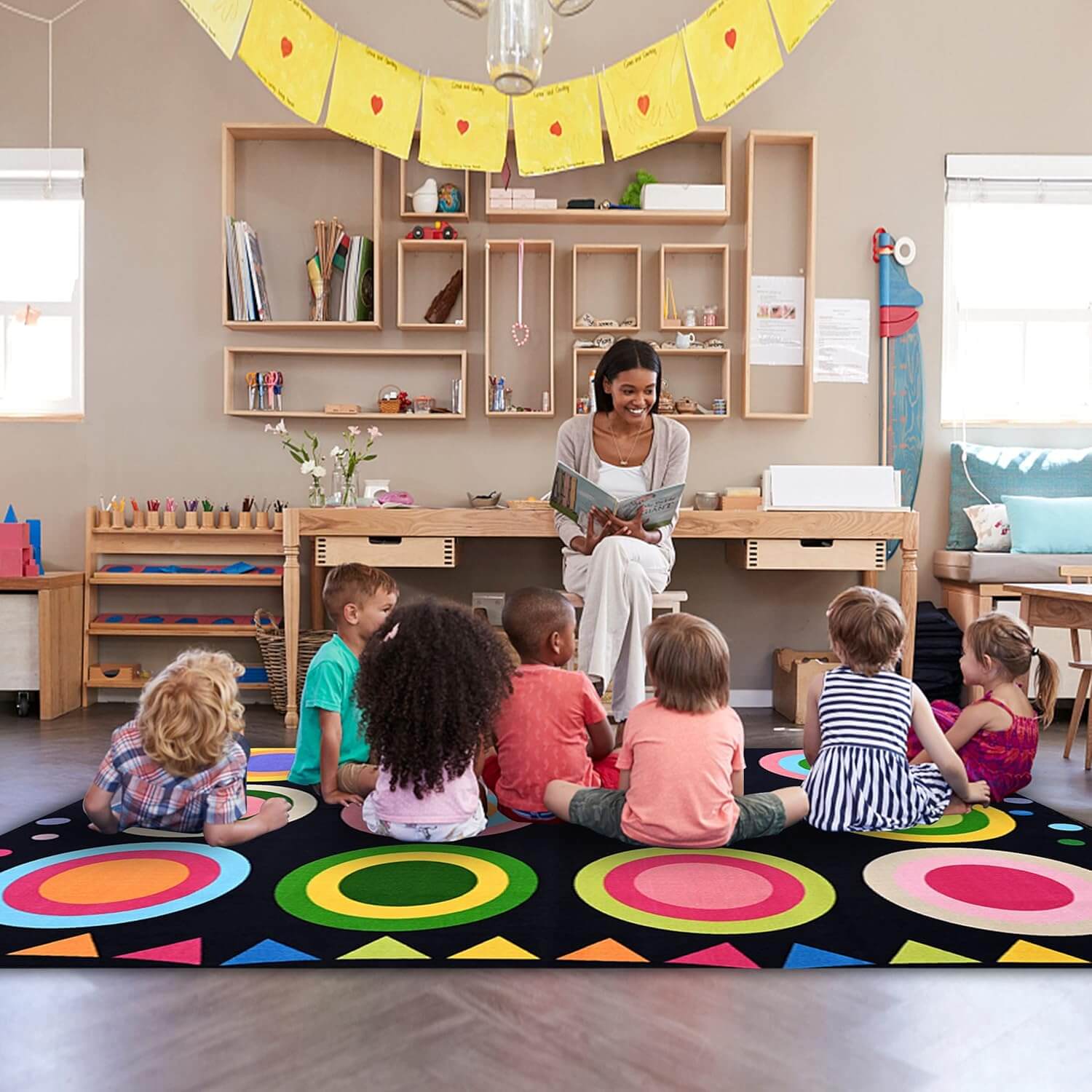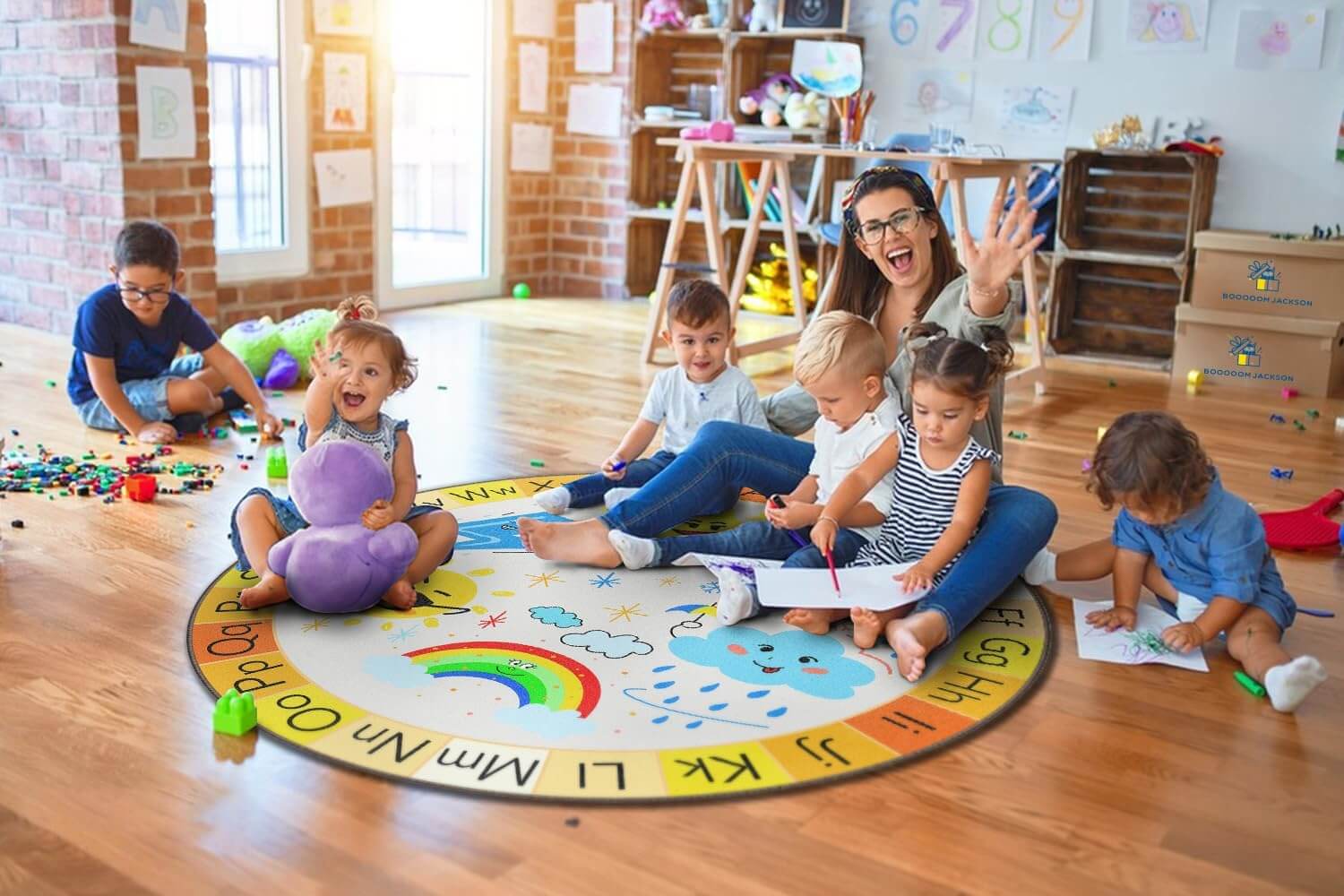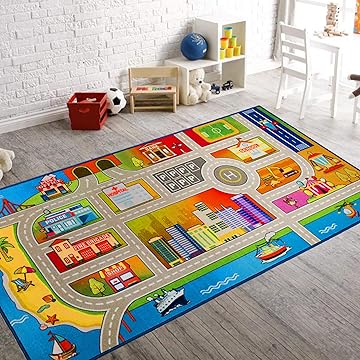The classroom floor represents one of the largest yet most underutilized learning surfaces in educational environments.
While traditional classroom design focuses on wall displays and desk-based activities, innovative educators are discovering the enormous potential of classroom rugs as powerful STEM/STEAM learning tools.
These specialized floor coverings transform passive walking surfaces into interactive learning platforms that engage children's minds and bodies simultaneously, creating multisensory experiences that enhance concept retention and application.
Mathematical Learning with Carpet Grids: Numbers Beneath Their Feet
Educational carpets with mathematical elements create opportunities for embodied learning experiences that help children internalize abstract concepts through physical movement and spatial relationships.
Number Sense and Operations
Number grid carpets provide versatile foundations for countless mathematical activities:
- Skip Counting: Physical jumping by 2s, 5s, 10s reinforces patterns while incorporating movement
- Addition/Subtraction: Students physically move through calculation steps, building mental models
- Multiplication: Body-based arrays where students position themselves on classroom seating rugs to visualize multiplication facts
- Division: Group-sorting activities that physically demonstrate division concepts
According to mathematics education researchers, embodied learning approaches that incorporate movement significantly enhance mathematical concept development, particularly for kinesthetic learners.
Geometry and Spatial Concepts
Carpets featuring geometric designs offer rich opportunities for exploring shape properties:
- Shape Recognition: Identification activities using body positions on various shapes
- Symmetry Exploration: Physical demonstrations of line symmetry using rope dividers on carpet patterns
- Transformational Geometry: Students physically demonstrate rotations, reflections, and translations
- Coordinate Mapping: Using grid carpets to introduce coordinate systems through position games
Coding and Computational Thinking: Floor-Based Programming
Carpet grids provide ideal settings for introducing fundamental coding concepts through unplugged activities that develop computational thinking skills.
Basic Programming Concepts
Grid-based carpet activities introduce coding principles without screens:
- Sequencing: Students create and follow directional command sequences across carpet grids
- Debugging: Teams identify and correct errors in movement sequences
- Loops: Physical repetition of movement patterns to accomplish tasks efficiently
- Conditionals: "If-then" movement challenges based on carpet colors or patterns
Algorithm Development
Carpet-based challenges foster algorithmic thinking:
- Optimal Path Finding: Students develop and test multiple solutions to navigate carpet mazes
- Pattern Recognition: Identifying and continuing movement patterns across carpet designs
- Decomposition: Breaking complex carpet traversal challenges into manageable steps
- Abstraction: Creating symbol-based movement "code" that others can follow
Educational technology specialists note that these physical computing experiences create powerful mental models that transfer effectively to digital programming environments later.
Engineering Challenges on Carpet Spaces: Building and Testing
Designated zones, often anchored by large classroom rugs, create ideal spaces for engineering design processes, providing consistent surfaces for construction and testing while defining collaborative workspaces.
Structural Engineering Activities
Carpeted spaces support building activities in ways hard surfaces cannot:
- Stability Testing: Carpet provides slight cushioning that challenges structural stability in realistic ways
- Vibration Impacts: Testing structure response to vibrations (walking nearby) on carpeted surfaces
- Foundation Design: Exploring how different structures interact with softer carpet surfaces
- Earthquake Simulation: Gentle carpet shaking to test structural integrity
Vehicle and Motion Engineering
Carpet texture adds variables to motion-based engineering challenges:
- Friction Testing: Comparing vehicle movement across different carpet textures
- Ramp Challenges: Creating and testing ramps to overcome carpet friction
- Pulley Systems: Designing systems to move objects across carpeted terrain
- Propulsion Design: Engineering vehicles optimized for carpet surfaces
Engineering educators emphasize that the slight inconsistency and friction of carpet surfaces actually create more authentic engineering challenges than perfectly smooth surfaces, better preparing students for real-world variables.
Scientific Inquiry and Exploration: Observable Phenomena
Carpeted learning spaces support scientific investigation by providing controlled areas for observation, prediction, and experimentation.
Environmental Science Connections
Carpet-based activities connect students to environmental concepts:
- Habitat Mapping: Using carpet designs to create model ecosystems
- Weather Patterns: Tracking and mapping weather phenomena on map carpets
- Watershed Demonstrations: Using carpet elevation changes to demonstrate water flow
- Population Distribution: Modeling organism distribution using carpet grid systems
Physics Explorations
Carpet surfaces create opportunities for exploring physical principles:
- Force and Motion: Investigating how different objects move across carpet textures
- Sound Wave Visualization: Using rice or salt on carpet to visualize sound vibration patterns
- Magnetic Field Mapping: Using carpet grids to map magnetic fields with compass or iron filings
- Simple Machine Testing: Measuring effort required to move objects across different carpet surfaces
According to science education journals, providing consistent testing surfaces like educational carpets helps young scientists develop better experimental controls in their investigations.
Artistic Integration for Full STEAM Approach: Creative Expression
Educational carpets provide inspiring templates for artistic activities that complete the STEAM approach by integrating creative expression with technical concepts.
Visual Arts Connections
Carpet patterns and designs inspire artistic exploration:
- Pattern Extension: Creating artwork that continues patterns found in carpet designs, such as the intricate motifs on our boho classroom rugs
- Texture Rubbings: Using carpet textures for rubbing plates in art projects
- Color Theory: Analyzing and extending the vibrant hues found in our colorful classroom rugs
- Perspective Drawing: Using carpet grid patterns to learn perspective techniques
Performing Arts Integration
Carpet-defined spaces enhance movement-based artistic expression:
- Dance Notation: Using carpet grids to create and record dance sequences
- Musical Movement: Following carpet patterns in music-driven movement activities
- Dramatic Play Zoning: Defining performance spaces with carpet boundaries
- Rhythm Mapping: Translating carpet patterns into percussive rhythms
Spatial Reasoning Development: Mental Mapping Skills
One of the most powerful but overlooked benefits of educational carpets is their contribution to spatial reasoning skill development, which strongly correlates with later STEM success.
Mental Rotation and Visualization
Carpet-based activities enhance mental visualization abilities:
- Perspective-Taking: Students describe carpet patterns from different positions
- Mental Mapping: Memorizing and recreating paths across complex carpet designs
- Transformation Challenges: Visualizing carpet patterns from different orientations
- Scale Model Activities: Creating proportional models based on carpet grid measurements
Navigation and Directional Concepts
Carpet designs support development of navigational understanding:
- Cardinal Direction Practice: Using compass rose carpet designs for orientation activities
- Mapping Skills: Creating maps of carpet layouts and routes
- Coordinate Systems: Locating positions using carpet grid references
- Relative Position Concepts: Developing language of spatial relationships through carpet activities
Research from cognitive development experts indicates that early spatial reasoning experiences strongly predict later success in STEM fields, particularly engineering and advanced mathematics.
Cross-Curricular Connections: Extending STEM Through Integration
Educational carpets naturally support cross-curricular learning by providing common reference points for connecting diverse subject areas.
Literacy Connections
Carpet-based STEM activities, often centered around a dedicated reading rug, naturally incorporate language development:
- Directional Language: Developing precise vocabulary through carpet navigation
- Procedural Writing: Recording step-by-step processes for carpet challenges
- Descriptive Language: Enhancing observation skills through carpet feature descriptions
- Technical Vocabulary: Building subject-specific terminology through carpet-based activities
Social Studies Integration
Map carpets and grid systems connect to social studies concepts:
- Geographic Features: Identifying and discussing landforms on map carpets
- Cultural Connections: Exploring designs from different cultures in carpet patterns
- Economic Concepts: Creating marketplace simulations in carpet-defined spaces
- Historical Timelines: Using carpet pathways to create physical timelines
Conclusion
Educational carpets represent far more than comfortable floor coverings for classroom environments—they are versatile instructional tools that can transform STEM/STEAM education through multisensory, movement-based learning experiences.
By thoughtfully integrating these specialized surfaces into science, technology, engineering, art, and mathematics instruction, educators can create learning environments where abstract concepts become tangible, spatial reasoning flourishes, and children engage with curriculum through both mind and body.
Whether using a specialized educational carpet with built-in learning features or simply defining spaces on standard classroom carpeting, the floor beneath students' feet represents valuable educational real estate that supports STEM/STEAM learning in uniquely effective ways.
As education continues to emphasize hands-on, experiential learning approaches, the humble classroom carpet may just be one of the most powerful and versatile teaching tools available to innovative educators.




Leave a comment
This site is protected by hCaptcha and the hCaptcha Privacy Policy and Terms of Service apply.